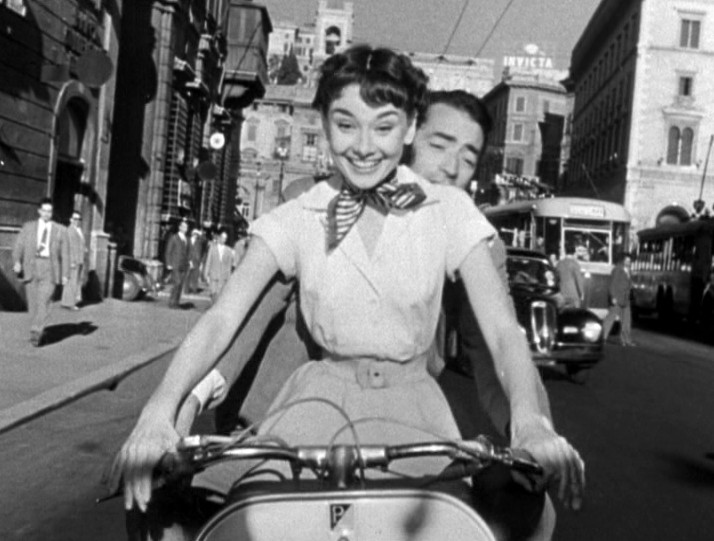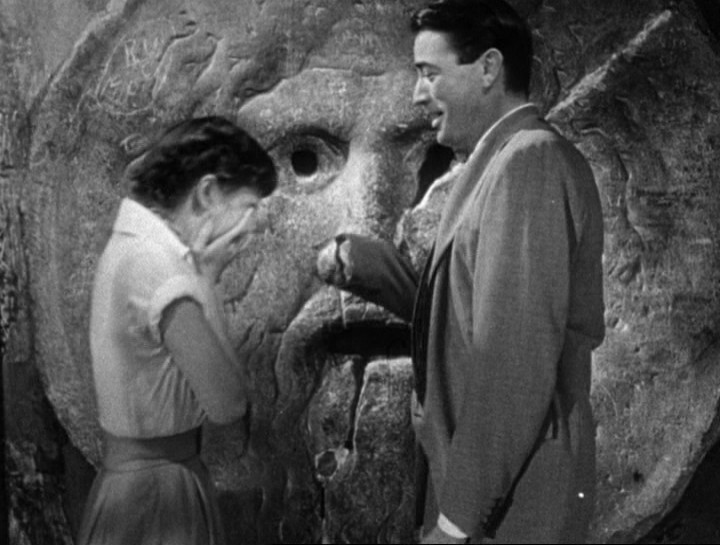
Roman Holiday premiered in 1953 starring Gregory Peck and Audrey Hepburn, jumpstarting Hepburn’s career. This was Audrey Hepburn’s first starring role as Princess Anne in this Italian-set romantic-comedy. In the film, Anne is a royal princess who wants to explore Rome on her own when she meets and falls in love with Peck’s character, Joe Bradley, who is secretly a reporter. Although this film is based on Italy, it is very much an American movie meant for entertainment with a whole storyline. This film contains a classical POV and classical root, but it can be argued to have both a classical and modernist narrative. Although Princess Anne and Joe deeply care for each other, they can never be together, and this isn’t a conflict that gets resolved. At the end of the film, they shake hands and see each other one last time; he walks out of the palace as she walks deeper into it. They don’t end up together, which is what would fit a classical Hollywood narrative of this time. Instead, it leaves the viewer reflexive. While the viewer is about ninety percent sure that this is how Anne and Joe leave their business with each other, it still makes them wonder if they ever meet up again in the future and thus can be considered open-ended.

The way Roman Holiday ends definitely involves realism as far as reaffirming the status quo of society. Anne is a royal princess who continues to live the life planned for her, while always having the memory of her time with Joe Bradley. Joe probably continues his life as a reporter and they probably never see each other again, returning to their respective places in society. An important aspect of formalism in many classical Hollywood films is that most contained long shots as opposed to the quick editing cuts of today. In the scene where Anne and Joe are standing at the Mouth of Truth, the music and lighting makes the viewer feel on edge, like something bad is about to happen. Anne is too afraid to stick her arm in the “lion’s” mouth so Joe does it instead. The music builds up and there are long shots that go back and forth between close-ups of his face, her face, and his arm sliding up in the mouth. Joe lets out a scream as he sticks his hand up the mouth and the intense music builds up as they are both screaming, trying to get his hand out of it. The music quickly cuts off as it’s shown that his hand is fine and he was just fooling with Anne. Audrey Hepburn went on to star in many classics that carried on into the very end of classical Hollywood cinema, transitioning into modern narratives. Some of her other well-known movies are Breakfast at Tiffany’s, Sabrina, Charade, Funny Girl, and My Fair Lady where she often starred alongside some of the greatest actors of all time such as Gregory Peck, Humphrey Bogart and Fred Astaire.



Love love love this movie! I think you’re right that it is classical with modern characeristics. When I first watched it I thought the same after the ending, but definately wondered what could have been or what could have happened. I loved all of her later films too, what a great actress!
LikeLiked by 1 person